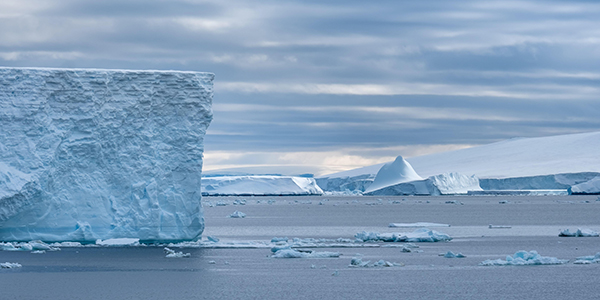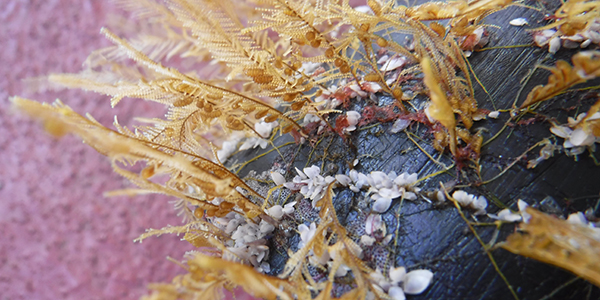
The race to understand polar ice sheets
By Leslie Carol Roberts As glacial cliffs break off and destabilize frozen landscapes, glaciologist Richard Alley focuses on the fractures. The work could improve predictions about future sea-level rise. Read more

Speedy downloads: Why NASA is turning to lasers for next-gen space comms
By John Johnson Jr. The first tests of optical communications far from Earth will take place aboard the asteroid-bound Psyche spacecraft Read more

In the Great Pacific Garbage Patch, new marine ecosystems are flourishing
By Tim Brinkhof Sea life, stuck to plastic bottles and other human trash, has journeyed far from coastal habitats — and may threaten local species Read more
From the archives
Controlled burns and mechanical thinning of vegetation around California’s giant sequoias may be key to the trees’ survival, but reaching agreement on how to implement such strategies has proved challenging, Jim Robbins writes at Yale Environment 360. Learn more about the importance of nuance in managing Western forests from our 2023 interview with fire ecologist Jon Keeley.

Controlled burns won’t save all of California from wildfire
By Nicola Jones There are two types of wildfire in the state, and they’re on the rise for different reasons. Each needs a distinct management approach, a researcher says. Read more
What we’re reading
Water woes
The Colorado River is overdrawn, pushing communities in the seven states that rely on its water to enact drastic cutbacks. Meanwhile, 20 farming families in California’s Imperial Valley draw more Colorado River water than some entire states, as detailed in a graphics-rich story by reporters at ProPublica and the Desert Sun. Water rights established in the days of homesteaders have led to lopsided consumption: One farming family uses more water than the Las Vegas metropolitan area. Much of that water goes to grow hay, a thirsty crop. That hay feeds cows, which feed people, which means that what’s on our dinner plates is part of the problem — and changing it can be part of the solution.
Photon power
If you heat water enough, it evaporates into steam — that’s basic chemistry. But new research suggests that light can also prompt evaporation, at a rate double that expected from just heat. At Science News, Emily Conover covers the intriguing new finding, which might one day lead to tricks for things like desalinating sea water. Mysteries remain: How do photons break water’s molecular bonds? And why does green light beat other wavelengths at driving the reaction?
Seeking peace
Is war a relatively recent invention? Or is it as old as humanity? Anthropologists have long been trying to answer these questions — after all, if organized violence is somewhat modern, we might be able to parse its origins, Ross Andersen writes in the Atlantic. Ancient graves and battlefields offer clues: There are archeological finds that suggest war dates back at least to the dawn of agriculture, but the further back one looks, the scanter the evidence becomes. Other researchers have looked for answers among our primate relatives; nothing concrete emerges there. Yet even if war is an intimate part of human history, does it have to be our future? “We are always changing,” writes Andersen, “sometimes even for the better.”

Art & science

CREDIT: NYU APPLIED MATHEMATICS LABORATORY
Carved by air
For centuries, the enduring fascination with ancient Egyptian structures has revolved around how they were built. How, for example, do you construct a 240-foot-long cat with a human head? New research suggests that the artists and builders of the Sphinx were helped by the sculpting forces of wind.
Scientists tested this notion with a miniature lab rendition of the Giza plateau made of mounds of bentonite clay on a platform. In one mound, they stuck a plastic cylinder to mimic rock that’s resistant to erosion. In lieu of wind, they sent water flowing over the mounds. As shown in the image above, the study found that the erosion-resistant material can become a head, and within its “wind shadow” a body with a tapered neck and protruding paws can emerge. If this process played out in Egypt, it’s possible that the Sphinx creators cut designs into a preexisting structure called a yardang, which forms naturally but looks like a carved sculpture. This theory for the Sphinx’s origin was first proposed by Egyptian geologist Farouk El-Baz in the 1980s; read more about it, and the new study, at Ars Technica.



